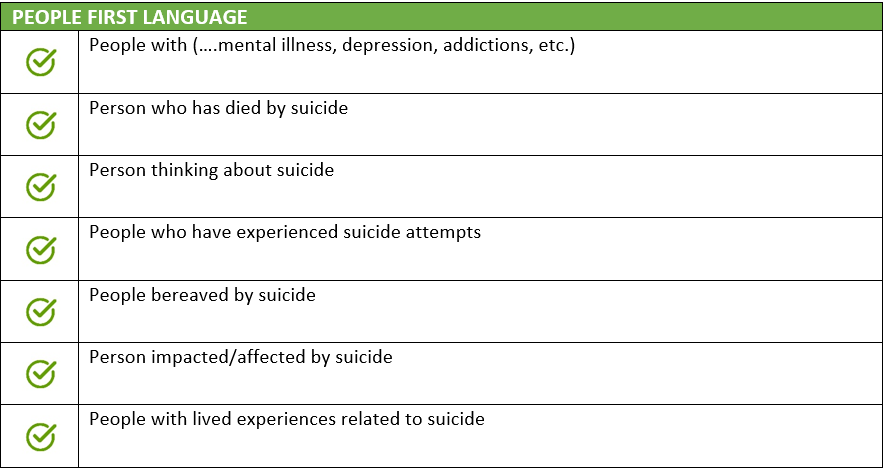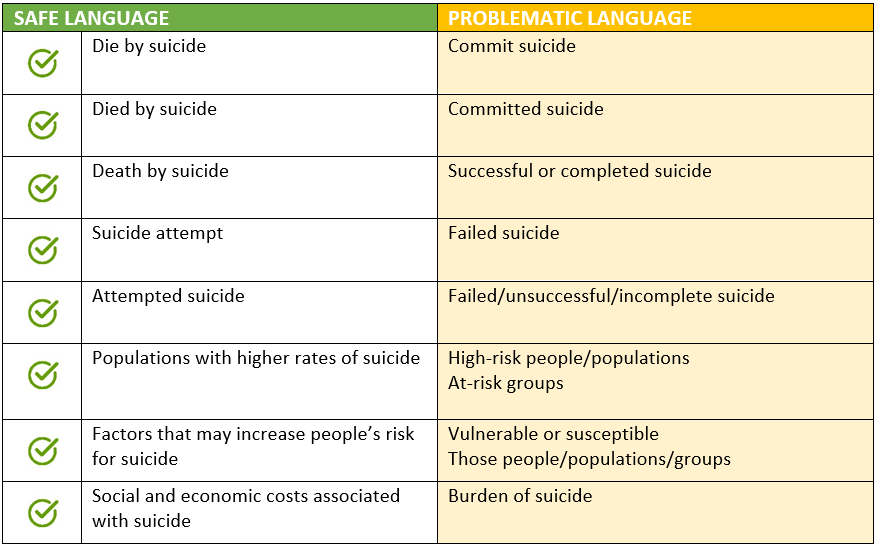Safe Communication for Suicide Prevention
Suicide is a complex issue with many contributing factors. It can be especially challenging to address because it is so often associated with shame, guilt, or secrecy. However, we do know that there are key ways to help people who may be experiencing suicidal thoughts. One of these ways is through language and messaging around suicide prevention. As a culture, we need to use safe communication that empowers people in distress while also being sensitive to those around us.
Language Matters
Language is a powerful tool, and when we use safe language, it can help us to understand ourselves and others better. It also allows us to feel more comfortable, connected, and hopeful. The language we use has a significant impact on the way we think about and respond to suicide. It is important to learn more about safe language before talking with anyone who has been impacted directly or indirectly by death by suicide or a suicide attempt.
Language That Puts People First
The words we use to discuss suicide can be harmful or helpful. Words matter because they affect how people think about and talk about suicide, which in return can shape how someone may respond when experiencing suicidal thoughts. People-first language, or PFL, is when we put a person before a diagnosis, describing what condition a person “has” rather than asserting what a person “is.” Using person-first language helps to avoid harmful words and highlights each person’s differences and experiences in a respectful way. Here are some examples of people-first language when it comes to discussing suicide.

Using Safe Language
Safe language supports open conversations about suicide. It helps reduce stigma and discrimination, makes it easier to reach out for help and hope, and encourages people who are struggling to seek assistance. When talking about suicide or mental health it is important to use safe language to help people feel comfortable. When used, you can make it easier for others to open up, and potentially reach out for help or support.
To create safe language, use words that respect everyone’s dignity and worth as human beings. People are not “at risk” of suicide or a “victim” of suicide; they may be in crisis or experiencing suicidal thoughts, but they are never the cause or fault of their own death by suicide. Replacing problematic language with respectful and neutral language help shift the perception and culture surrounding suicide. Here are some examples of how we can make the communication about suicide safer.

To see more common Dos and Don’ts when it comes to communication, safe messaging, and people first language check out the Language Matters: Safe Language and Messages for Suicide Prevention.
Creating Help, Hope and Healing With Safe Communication
Using neutral, factual, and respectful words focuses on lessening the stigma surrounding suicide while bringing the emphasis to prevention. Changing common terms we use like “warning signs” to words that convey a sense of community and belonging like “invitations for help” can provide a safe space to start a conversation. We recently sat down with Elisa Brewer-Singh of the Waterloo Region Suicide Prevention Council where we walked about suicide awareness and prevention. Check out our podcast at Inside the Sweeps: Creating Hope through Action with the Waterloo Region Suicide Prevention Council.
We can all use more helpful, safe, and inclusive language when discussing suicide. We live in a world where suicide is still stigmatized and talking about it remains difficult. It is important to remember that there are always ways to support others without making them feel bad about themselves or their situation – and the language we use should reflect this. By keeping the words, we use in mind when we speak about suicide, it is proof our actions, big or small, may provide help, hope and healing to those who may be struggling.
